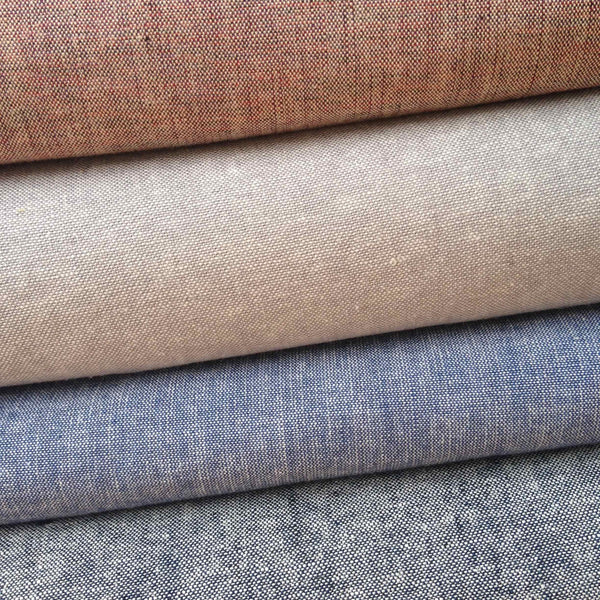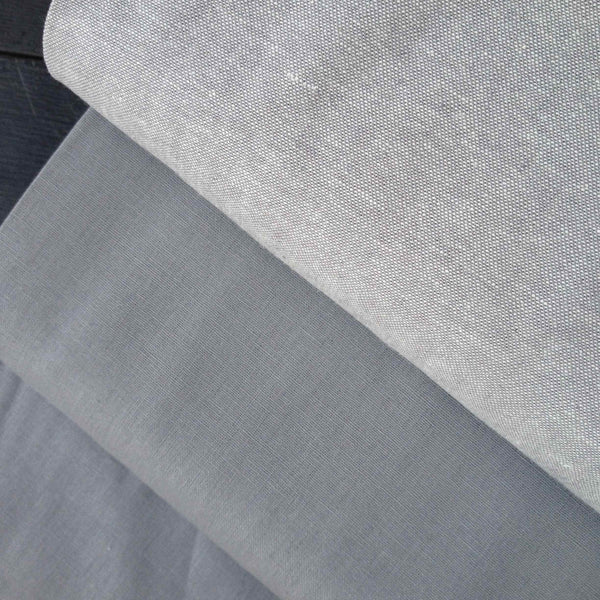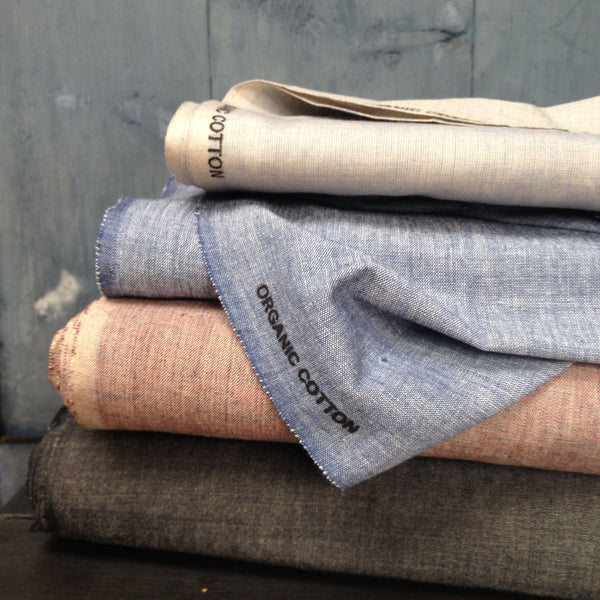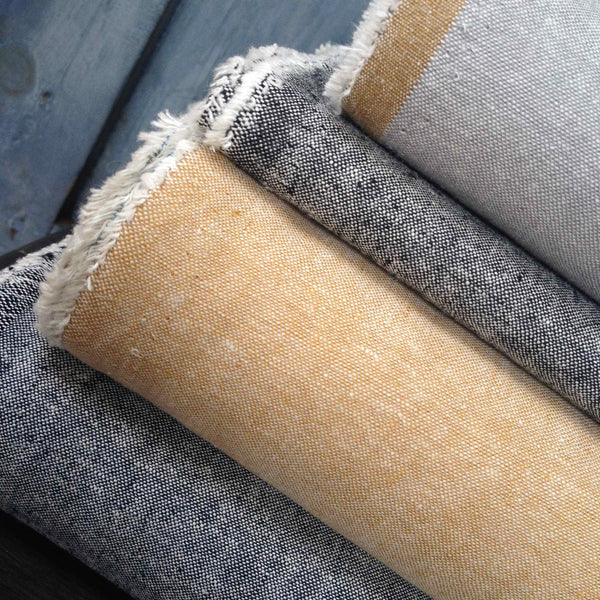Crossweave Fabrics Explained
We stock quite a few different "crossweave" fabrics here at The Draper's Daughter and really like the two-tone look that using two different coloured threads creates when the fabric is woven.

Fabric is woven from two sets of thread (known as "warp" and "weft") going in different directions. Warp is the set of lengthwise threads, which run up and down the length of the fabric; in the manufacturing process they're held in tension on a frame or a loom. The thread that is then inserted over-and-under the warp threads is called the weft. In the image below shows a close up of our Yarn Dyed Essex Linen in Indigo, the warp threads are Navy and the weft are the Light Cream.
Crossweaves then, are fabrics woven with different coloured warp and weft threads which have been yarn dyed before the fabric is made. This gives a softer "chambray" look when compared to an equivalent solid coloured fabric.

Pictured above are the two Robert Kaufman Essex Linens that we stock in Steel, both made using the same shade of grey. The yarn dyed, crossweave version at the top has been woven with a light cream coloured weft yarn, and looks significantly paler than the solid version of the same colour below which has been woven with the Steel thread for both the warp and weft.
In terms of the crossweaves that we stock, our first collection needs no introduction, pictured above are our Organic Cotton Crossweaves. These fabrics are hand woven in India on small power looms, using 100% Organic Cotton.
Then we have the Yarn Dyed Essex Linens by Robert Kaufman, as pictured above. These are a heavier weight than the Organic Crossweaves and perfect for both dressmaking and soft furnishing projects.
We hope this post has inspired you to use crossweaves in one of your future sewing projects, and we'd love to see what you make, please send us your photos via the contact page.




